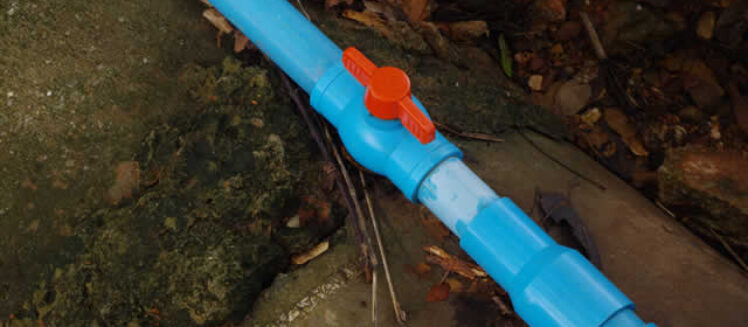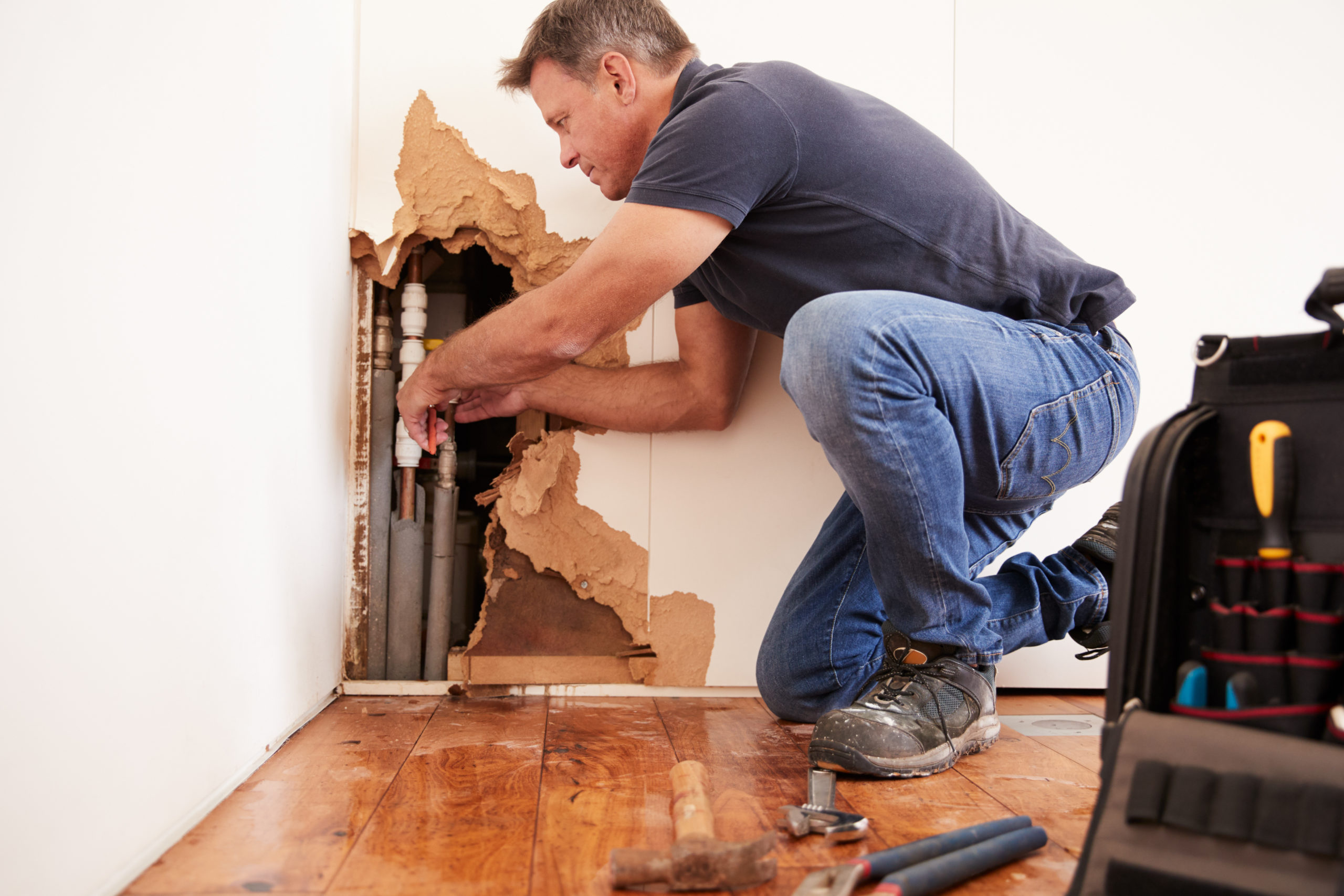This article which follows relating to Understanding the Basics of Your Home's Plumbing System is definitely attention-grabbing. Don't bypass it.

Plumbing is an essential aspect of any kind of home, in charge of supplying clean water for drinking, food preparation, and bathing, in addition to removing wastewater securely. Understanding the basics of home plumbing is vital for every single home owner to make certain proper maintenance, troubleshooting, and, if required, repairs. In this beginner's guide, we'll cover the basic concepts of home plumbing to aid you come to be much more familiar with just how it works.
Water Supply System
The water system brings clean water right into your home from a metropolitan water source or an exclusive well. It includes a main water line that links to your home's plumbing system, typically situated underground. A water meter determines the quantity of water taken in, while a shut-off shutoff enables you to regulate the flow of water right into your home.
Plumbing Fixtures
Plumbing components are devices that supply water to various parts of your home and consist of sinks, faucets, bathrooms, showers, bath tubs, and appliances such as dish washers and washing equipments. Each fixture is attached to the water supply system by means of pipelines and fittings and might have its shut-off shutoff for maintenance or emergency situations.
Water Heating System
The water heater is responsible for home heating water for residential usage, including showering, food preparation, and cleansing. Typical kinds of hot water heater include tank-type water heaters, tankless (on-demand) hot water heater, and heatpump water heaters. The hot water heater is attached to the supply of water system and provides warm water to plumbing fixtures as needed.
Drain System
The drainage system eliminates wastewater from your home and brings it away to a sewage therapy facility or septic system. It consists of a network of pipelines, installations, and fixtures that move wastewater from plumbing components to the major sewer line or septic tank. Proper drain is essential to prevent clogs, backups, and sewage leaks.
Ventilation System
The air flow system aids preserve appropriate air pressure and stop drain gases from entering your home. Vent pipelines, likewise referred to as air vent heaps, extend from plumbing components to the roofing system, enabling sewage system gases to get away safely outdoors. Ventilation pipes likewise enable air to go into the drainage system, facilitating smooth wastewater flow and protecting against suction or vacuum cleaner impacts.
Common Plumbing Tools
Having the right tools accessible is essential for carrying out fundamental plumbing repair services and maintenance tasks. Typical plumbing devices consist of adjustable wrenches, monkey wrench, pliers, pipeline cutters, hacksaws, plungers, augers (or drainpipe snakes), and Teflon tape. Having these devices readily available can assist you deal with small plumbing concerns effectively.
Standard Plumbing Fixings
While some plumbing repair services might require professional aid, lots of typical problems can be attended to with standard do it yourself techniques. Understanding how to deal with a leaky tap, unblock a drainpipe, change a toilet flapper, or fix a dripping showerhead can save you time and money on plumbing repairs.
Verdict
Recognizing the fundamentals of home plumbing is vital for every homeowner to keep a safe, useful, and effective plumbing system. By acquainting yourself with the water supply system, plumbing components, drainage system, air flow system, common plumbing devices, and standard repair services, you can confidently attend to minor plumbing problems and guarantee your home's plumbing system operates efficiently.
Plumbing for Beginners: A Comprehensive Guide
If you’re a beginner when it comes to plumbing, don’t worry; you’re not alone. Plumbing may seem intimidating, but with the right knowledge and a little practice, you can handle many common plumbing issues on your own. In this comprehensive guide, we will demystify the world of plumbing for beginners, providing you with the basic knowledge and skills needed to tackle common plumbing problems and even take on some DIY plumbing projects.
The Importance of Basic Plumbing Knowledge for Beginners:
First and foremost, basic plumbing knowledge gives you a solid foundation. It helps you grasp the key concepts and terminology that are essential in this field. By learning the basics, you’ll be able to build upon that knowledge and tackle more complex plumbing tasks in the future.
Having a basic understanding of plumbing also enables you to handle common issues that may arise in your home. Picture this: a leaky faucet or a clogged drain. With some basic plumbing knowledge, you’ll have the confidence to troubleshoot and fix these problems on your own. It saves you from unnecessary expenses and the hassle of waiting for a professional to arrive.
As a beginner, learning the basics of plumbing empowers you to take care of your own home. It gives you a sense of independence and self-reliance. You’ll no longer have to rely solely on professionals for every small issue that pops up. Instead, you can handle many tasks yourself, saving time and money in the process.
Remember, everyone starts as a beginner. Embrace the learning process and take small steps to expand your plumbing knowledge. There are plenty of online resources, tutorials, and even local workshops that talk about plumbing for beginners.
Essential Tools for Plumbing for Beginners
As you start your plumbing journey, having the right tools in your toolbox is crucial. Let’s explore some of the must-have tools:
Adjustable Wrench:
This versatile tool is a staple in any plumber’s toolbox. It allows you to tighten or loosen nuts and bolts of various sizes. Make sure to have an adjustable wrench with a comfortable grip.
Pipe Wrench:
A pipe wrench is specifically designed for gripping and turning pipes. It has serrated jaws that provide a strong grip, making it easier to loosen or tighten threaded pipes and fittings.
Plunger:
The plunger is a simple yet effective tool for clearing clogged drains and toilets. It creates suction when you push and pull, helping to dislodge blockages. Keep a good-quality plunger handy for those unexpected clogs.
Pipe Cutter:
When it comes to cutting pipes, a pipe cutter is your go-to tool. It creates clean, precise cuts without damaging the pipe. Look for a pipe cutter that can handle the pipe sizes you’re working with.
Hacksaw:
A hacksaw is useful for cutting through pipes, screws, and other materials. It’s a versatile tool that can handle different cutting tasks. Remember to use a blade suitable for cutting metal.
Tape Measure:
Accurate measurements are crucial in plumbing. A tape measure allows you to measure pipe lengths, distances, and dimensions accurately. Opt for a sturdy tape measure that extends a good length.
Pliers:
Pliers come in handy for various tasks, such as gripping, bending, and cutting. Slip-joint pliers with adjustable jaws are great for gripping pipes, nuts, and bolts.

Hopefully you enjoyed reading our topic on How Does the Plumbing Work in Your Home?. Many thanks for spending some time to browse our posting. So long as you appreciated our blog posting please do not forget to share it. Thanks for going through it.
Request Your Service